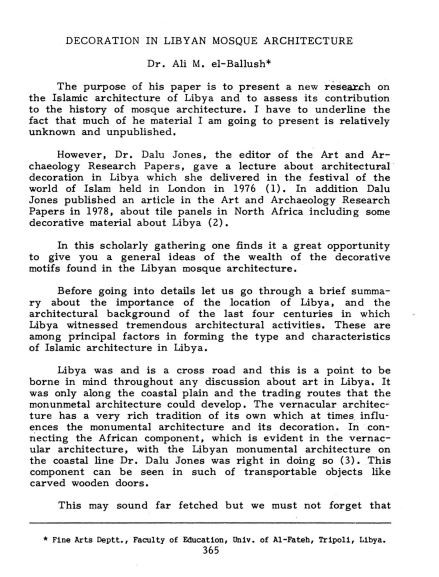
The paper investigates the unique decorative traditions in Libyan mosque architecture, exploring the influences from various regions such as Tunisia, Algeria, Egypt, and the Ottoman Empire over several centuries. It highlights the transformation of architectural styles from the pre-Ottoman period to the Ottoman occupational phase, with a specific focus on the detailed changes in decoration and roofing systems in mosque structures. Through comparative studies and visual documentation, the research emphasizes the artistic identity of Libyan mosque architecture within a broader North African context.
El-Ballush, Ali M., ‘Decoration in Libyan Mosque Architecture’, 2020.
I agree to the terms outlined below:
You agree to upload and assign Mosqpedia Database the rights to use the content worldwide and in perpetuity across all current and future media platforms. Mosqpedia Database may edit, copy, adapt and translate your contribution.
The content will be distributed under the Creative Commons Attribution-Deed – Attribution-NonCommercial-NoDerivatives 4.0 International – Creative Commons
All data will be stored in line with data protection regulations.